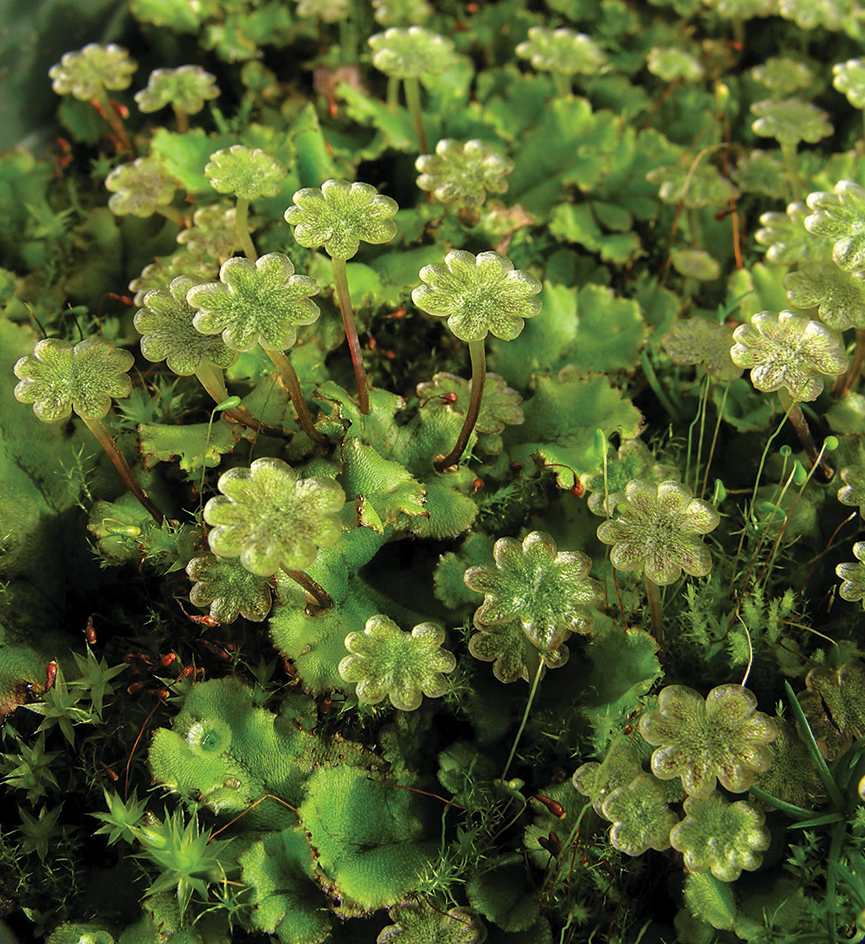Liverwort is a type of small, nonflowering plant. There are thousands of species (kinds) of liverworts, hundreds of which grow in the United States and Canada. Liverworts are found in polar, mild, and tropical regions. They contain chemicals called terpenoids, which give some liverworts a spicy aroma. Liverworts generally are inedible to people and many animals.
Botanists distinguish two general types of liverworts, thalloid and leafy. Thalloid liverworts consist only of a flat, leaflike thallus that grows horizontally along the ground. Leafy liverworts have three rows of leaves growing on a stem.
Liverworts do not have true roots. Instead, they are anchored to the ground by hairlike structures called rhizoids. A liverwort absorbs water over its entire surface and dries out quickly. Consequently, liverworts grow extremely close to the ground and often measure less than 1/2 inch (1.4 centimeters) high. Most liverworts grow only in damp, shady environments, such as rotten logs, stream banks, and moist cliffs.

The life cycle of liverworts involves two distinct forms of the plant, the sporophyte and the gametophyte. The sporophyte consists of a small stalk with a podlike capsule that releases microscopic cells called spores into the air. The liverwort life cycle begins when a wind-blown spore lands in a suitable, moist location and develops into a gametophyte. The gametophyte is the form of the plant familiarly recognized as the liverwort. Most liverwort gametophytes develop one of two types of reproductive structures—spherical antheridia or flasklike archegonia. In some species of liverworts, the gametophyte bears both antheridia and archegonia. Each antheridium releases sperm (male sex cells), and each archegonium contains an egg (female sex cell). A sperm may swim to an archegonium and fertilize the egg. The fertilized egg eventually develops into a sporophyte, completing the life cycle.
